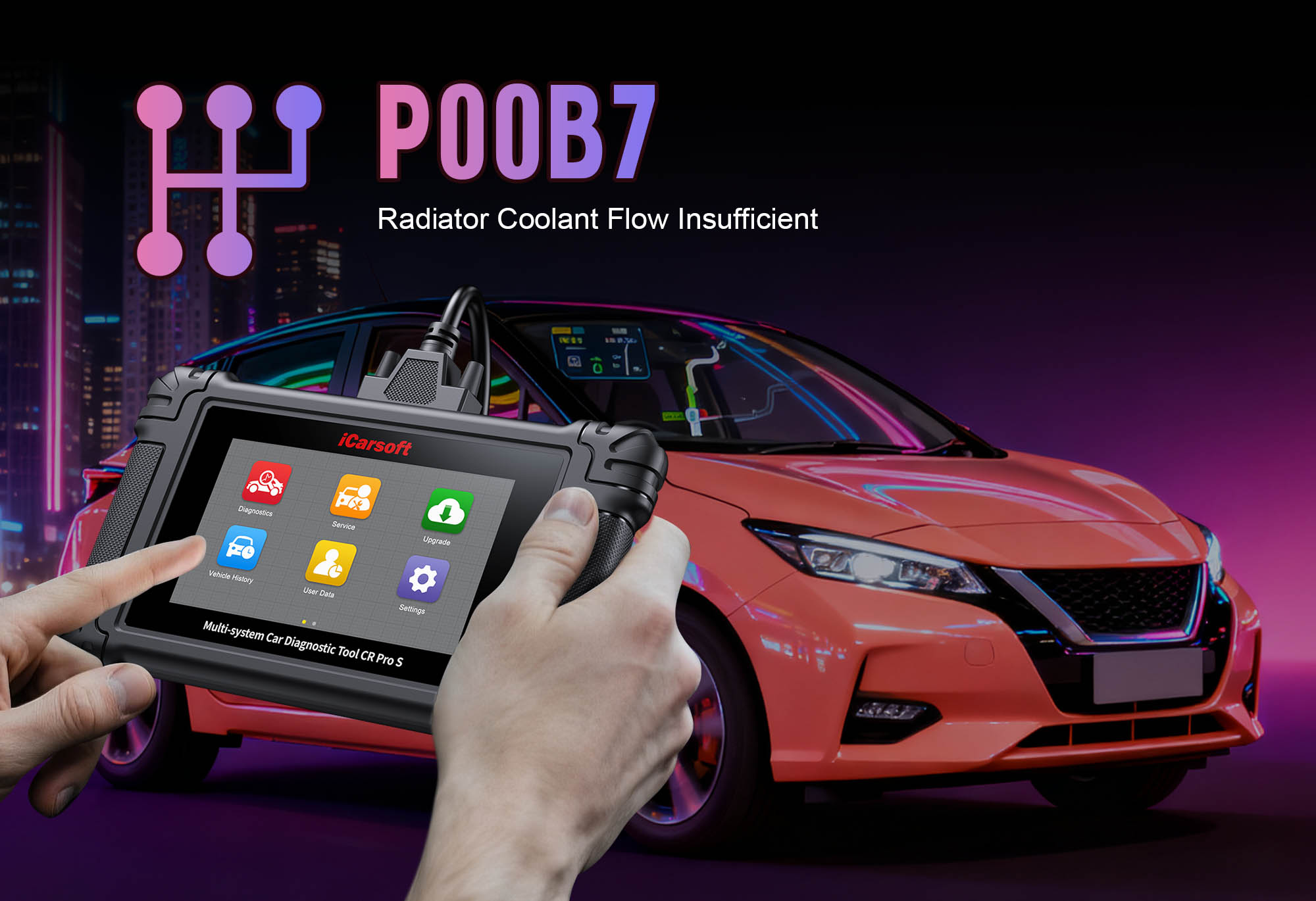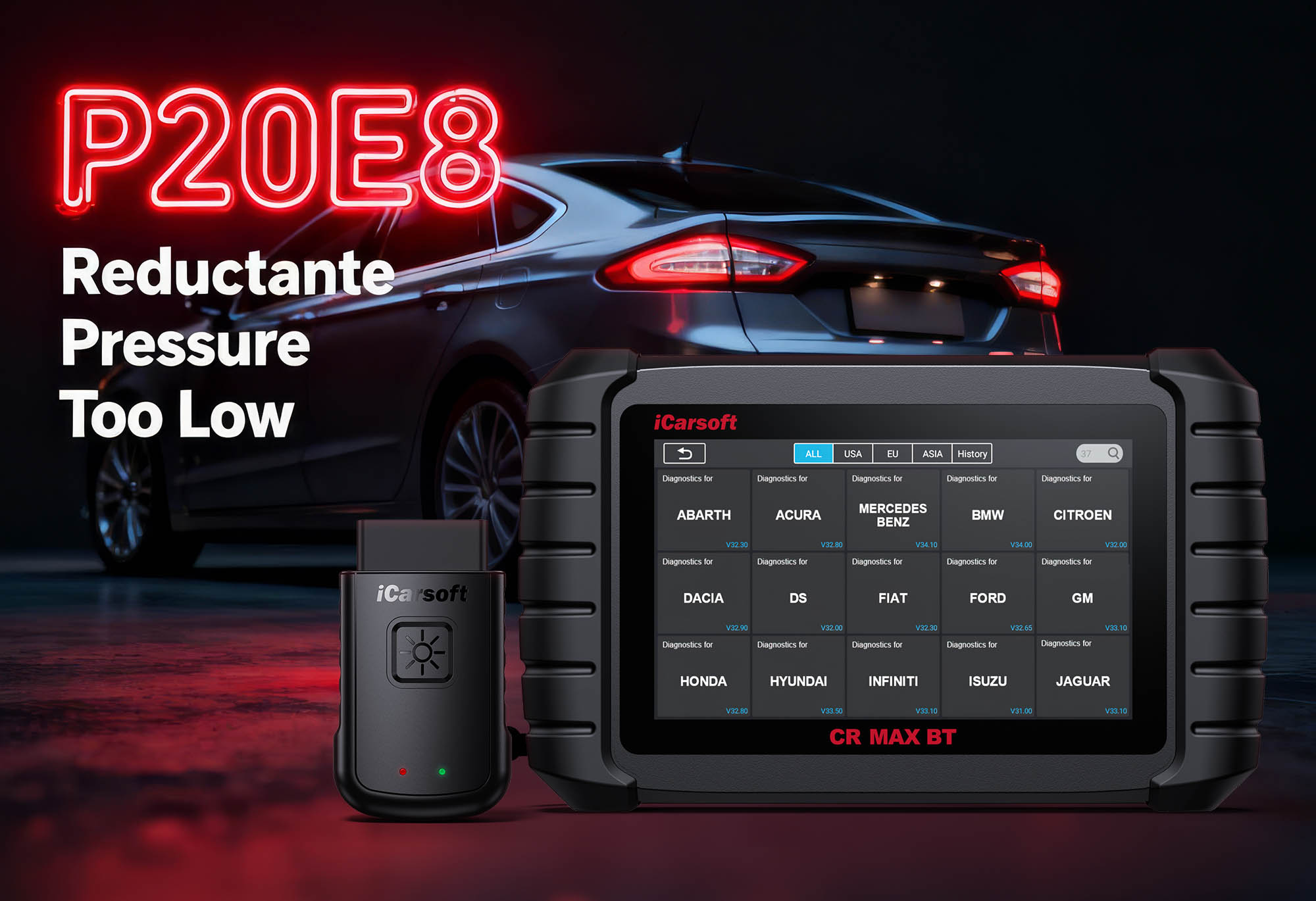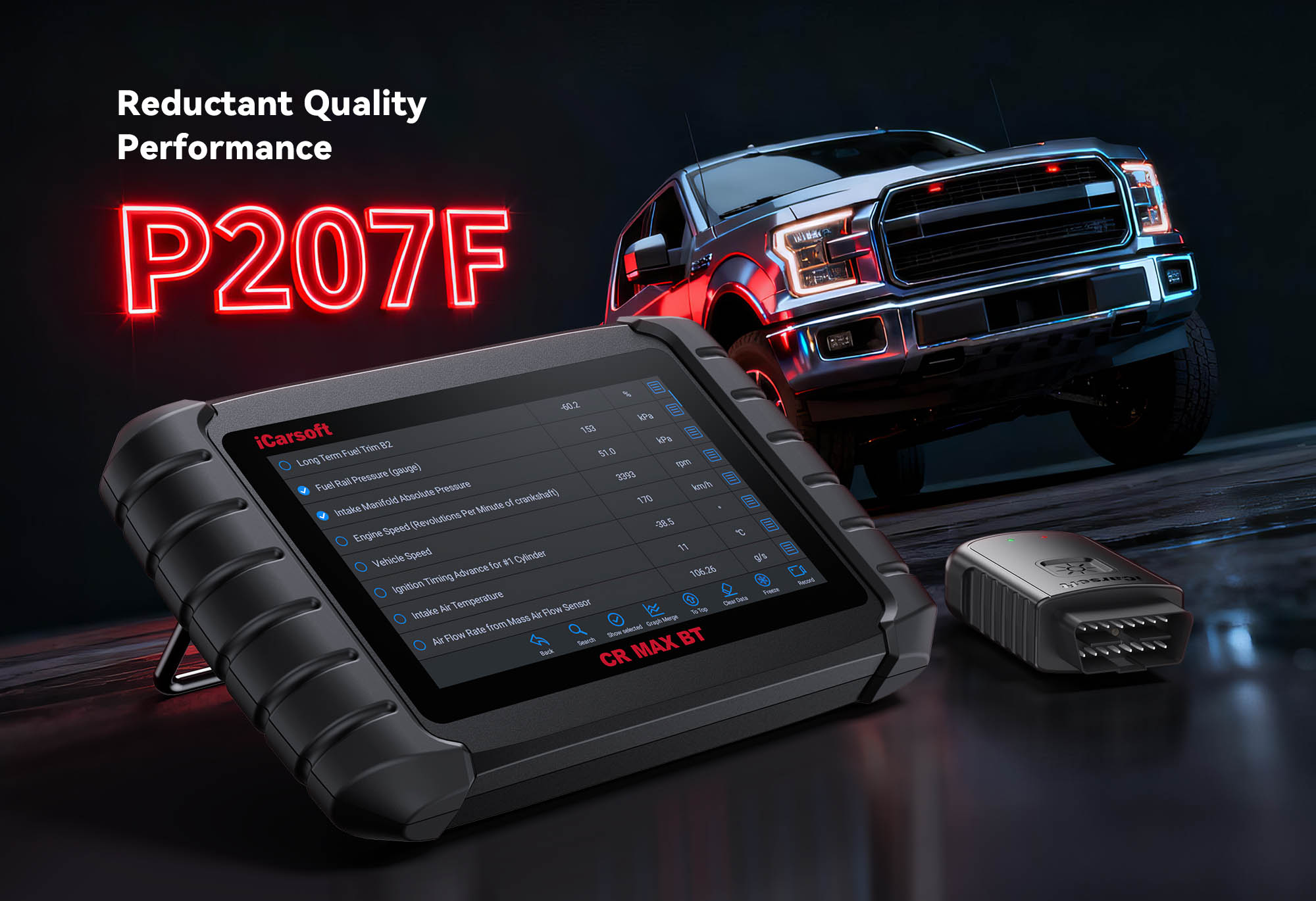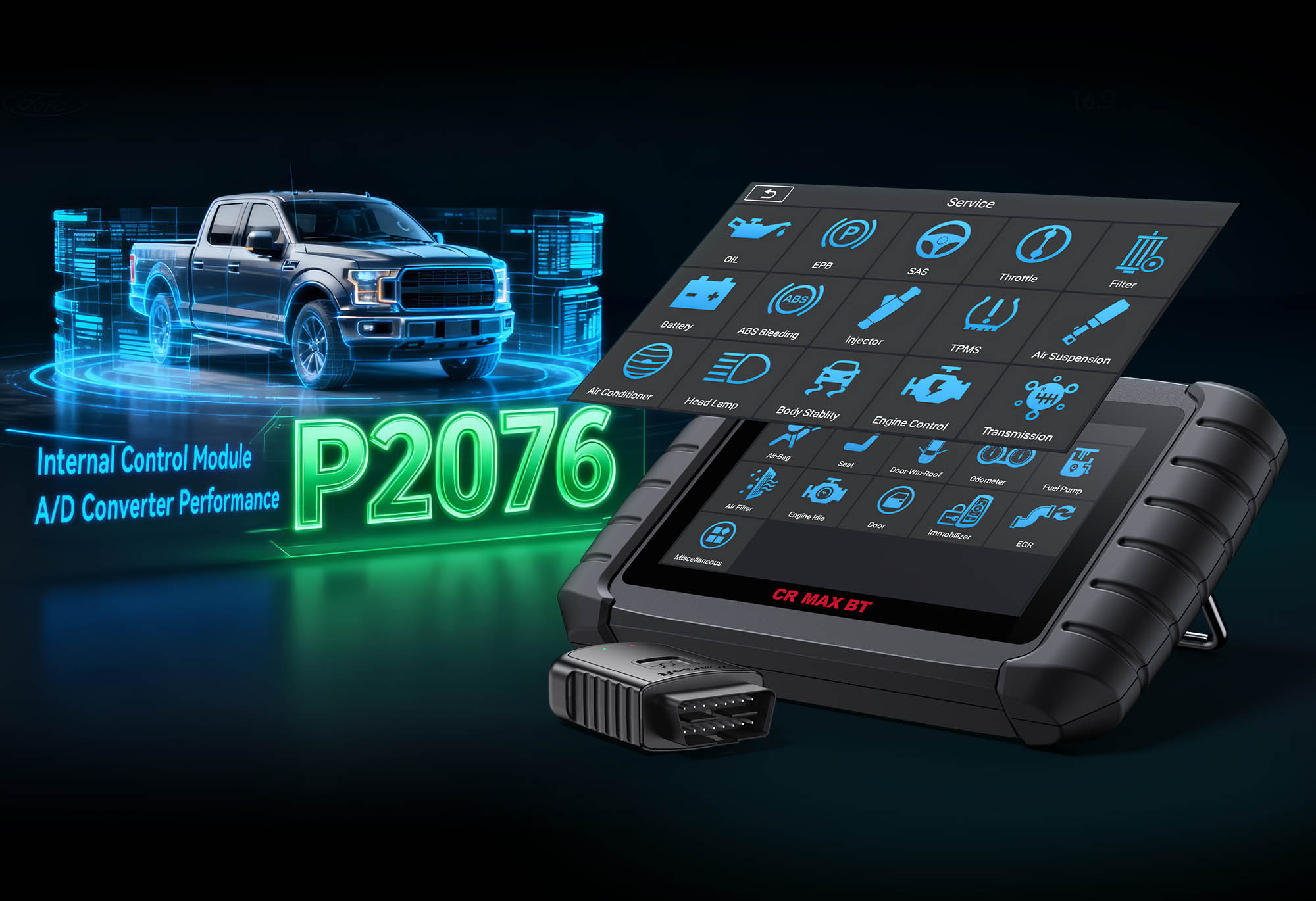P00B7 Code: Diagnose & Clear Coolant Flow Control Circuit Range/Performance with iCarsoft CR Pro S
If your check engine light illuminates and you notice symptoms like engine overheating, inconsistent cabin heating, or reduced fuel efficiency, a diagnostic scan will likely return P00B7. This OBD-II code stands for "Coolant Flow Control Circuit Range/Performance," indicating the Engine Control Module (ECM) has detected the coolant flow control system—responsible for regulating coolant circulation between the engine, heater core, and radiator—is operating outside normal parameters.
Modern vehicles use a coolant flow control valve (electric/thermostatic actuator) to adjust flow based on engine temperature, climate demands, and driving conditions. It restricts flow to warm the engine faster on cold starts or directs more to the heater core for cabin heat. When the valve fails to move as commanded or circuit voltage/resistance is abnormal, P00B7 triggers. Left unaddressed, this causes overheating, frozen lines, or heater malfunctions.
Basic scanners only flag "coolant flow fault" but can’t test valve movement or circuit integrity. The iCarsoft CR Pro S, with coolant system diagnostics, live flow tracking, and actuator tests, solves this. Let’s walk through precise diagnosis and resolution.
Understanding P00B7: Causes & Key Symptoms
A faulty coolant flow control circuit disrupts temperature regulation, with symptoms worsening as the system fails to adapt—these clues help separate valve issues from wiring or coolant problems.
Key Symptoms of P00B7
-
Engine Overheating: Temperature gauge spikes above 220°F/104°C, especially under load (towing, highway speeds).
-
Inconsistent Cabin Heat: Heater blows cold air (even on "high") or heat fluctuates unpredictably.
-
Slow Engine Warm-Up: Takes 10+ minutes to reach operating temp (normal = 5–7 minutes), reducing fuel efficiency.
-
Coolant Leaks: Stuck/damaged valve causes pressure buildup, leading to leaks around hoses or the valve.
-
Cold-Start Issues: Engine struggles to start or runs rough in freezing weather (coolant flow isn’t restricted for warm-up).
-
Intermittent Temperature Spikes: Gauge fluctuates between normal and hot, often triggered by climate control use.
Common Causes of P00B7
| Cause |
Description |
| Faulty Coolant Flow Control Valve |
Internal mechanical failure (stuck actuator, broken spring) prevents the valve from opening/closing properly. |
| Wiring/Connector Issues |
Corroded terminals, frayed wires, or loose plugs disrupt voltage/signal flow in the valve’s control circuit. |
| Coolant Flow Sensor Failure |
Sensor monitoring flow rate sends incorrect data to the ECM, triggering false P00B7 alerts. |
| Low/Contaminated Coolant |
Low levels or sludge (from old coolant) block the valve/sensor, impairing operation. |
| Thermostat Malfunction |
Stuck-open thermostat causes premature coolant circulation, overwhelming the flow control system. |
| ECM Software Glitch |
Outdated firmware or calibration errors make the ECM misinterpret valve position/flow data (rare in 2018+ models). |
Why iCarsoft CR Pro S Excels at Diagnosing P00B7
The CR Pro S outperforms basic tools with coolant flow-specific features, critical for isolating P00B7’s root cause:
Live Coolant Flow Tracking
Monitors real-time valve position, flow rate, and circuit voltage to spot deviations from normal ranges.
Bi-Directional Valve Tests
Manually activates the flow control valve to test opening/closing movement—verifies if it’s stuck.
Circuit Resistance & Voltage Checks
Measures wiring continuity and voltage to identify shorts, corrosion, or electrical faults.
Temperature Sensor Correlation
Cross-references engine, coolant, and cabin temp data to confirm flow control effectiveness.
Global Vehicle Coverage
Works with 500+ models (Ford, Toyota, BMW, Mercedes-Benz, Chevrolet) for varying valve designs.
ECM Coolant Calibration
Resets/re-calibrates ECM flow control parameters—fixes false P00B7 triggers from outdated software.
Step-by-Step: Diagnose P00B7 with iCarsoft CR Pro S
-
Check Coolant Level & Condition First
1. Ensure the engine is cold, then remove the coolant reservoir cap. Fluid should be between "MIN" and "MAX"—add 50/50 coolant-water mix if low.
2. Inspect coolant quality:
- Sludge/particles = old coolant (replace every 50k–100k miles).
- Milky appearance = head gasket leak (consult pro).
- Rust (brown/red tint) = corrosion (flush system + replace coolant).
-
Connect the CR Pro S & Confirm the Code
1. Plug into the OBD-II port (use OBDI adaptors for older models: Mercedes 38Pin, BMW 20Pin).
2. Select your vehicle via Auto VIN Identify (instant specs) or manual entry.
3. Navigate to Engine > Fault Codes > Read Codes to confirm P00B7. Tap Code Details for tips (e.g., "Toyota RAV4: Target Valve Position = 0–100%, Circuit Voltage = 12V").
-
Locate Coolant Flow Control Components
1. Go to Component Location > Engine > Cooling System > Coolant Flow Control.
2. Use the diagram to identify:
- Coolant Flow Control Valve: Mounted on engine block or coolant hose (near heater core inlet) with an electrical connector.
- Coolant Flow Sensor: Integrated with the valve or in-line (measures flow rate in GPM/LPM).
- Wiring Harness: Cables to ECM (check for damage near hot parts/sharp edges).
- Thermostat: Between engine and radiator hose (affects flow dynamics).
-
Analyze Live Coolant System Data
1. Start the engine (idle cold first, then warm up).
2. Navigate to Engine > Live Data > Cooling System and monitor:
- Valve Position: Normal = 0–100% (adjusts with temp/climate). P00B7 = stuck at 0%/100% or erratic.
- Valve Circuit Voltage: Normal = 10–14V. <9V/>15V = wiring/ECM fault.
- Engine Coolant Temp (ECT): Normal = 195–220°F. >220°F = flow restriction.
- Heater Core Inlet Temp: Rises with cabin heat (160–180°F). No rise = valve stuck closed.
- Flow Rate: Normal = 2–5 GPM. 0 GPM (warm engine) = valve stuck closed.
-
Test the Coolant Flow Control Valve
1. Bi-Directional Activation: - Go to Special Functions > Engine > Cooling System > Flow Valve Test.
- Select "Open/Close" commands—listen for clicking (movement). No click = stuck/electrical fault.
- Monitor position: Should change 0%→100% (or vice versa). No change = mechanical failure (replace valve).
2. Resistance Test: - Turn off engine, disconnect valve connector. Measure resistance (10–30 ohms, model-specific). Infinite = open circuit (replace valve).
-
Inspect Wiring, Connectors & Related Components
1. Wiring/Connectors: - Clean corroded valve connectors (electrical cleaner). Measure continuity between valve and ECM (normal = <5 ohms). Higher = damaged wiring (repair).
2. Thermostat Test: - Monitor ECT as engine warms. Stuck-open = ECT <195°F after 10+ minutes (replace).
3. Flow Sensor Test: - If equipped, run Special Functions > Flow Sensor Test. Erratic readings = replace sensor.
-
Rule Out ECM Issues
1. ECM Firmware Update: - Go to System > Update Manager to install free updates (fixes misinterpreted flow data).
2. Coolant Calibration: - Select Special Functions > Engine > Cooling System > Flow Control Calibration to reset ECM targets.
-
Repair & Clear P00B7
1. Fix the root cause:
- Faulty Valve: Replace with OEM part (use Part Lookup for compatibility).
- Wiring/Connectors: Repair frayed wires, clean corrosion, or replace harness.
- Coolant Issues: Refill or flush the cooling system.
- Thermostat/Sensor: Replace faulty components.
- ECM: Update firmware or re-calibrate.
2. Clear the code: Navigate to Engine > Fault Codes > Clear Codes to delete P00B7.
-
Validate the Repair
1. Recheck live data: Valve adjusts smoothly, ECT stays 195–220°F, heater core temp rises with heat.
2. Test drive 30–40 minutes (highway + climate use): No overheating or inconsistent heat.
3. Monitor temp gauge for 1 week: No spikes/fluctuations = successful repair.
4. Post-drive scan: Use Cooling System Scan after 100 miles to confirm P00B7 doesn’t return.
Preventing P00B7 Recurrence
Use the iCarsoft CR Pro S to maintain cooling system health long-term:
-
Coolant Maintenance: Set Service Reminder to replace coolant every 50,000–100,000 miles (use manufacturer-recommended type).
-
Valve & Sensor Checks: Include flow control valve tests in annual engine scans—catch sticking issues early.
-
Wiring Inspections: Check valve connectors/wiring every 30,000 miles—apply dielectric grease to prevent corrosion.
-
Thermostat Replacement: Replace the thermostat every 100,000 miles (even if functional) to avoid flow control overload.
Conclusion
P00B7’s coolant flow control circuit fault threatens engine health and cabin comfort—but the iCarsoft CR Pro S simplifies diagnosis with live flow tracking, valve tests, and system checks. Whether replacing a stuck valve, fixing wiring, or flushing coolant, this tool ensures you fix the root cause (not just the symptom).
With the CR Pro S, you’ll restore reliable temperature regulation, prevent overheating, and enjoy consistent cabin heat—no more costly engine damage or uncomfortable drives.
FAQs About P00B7 Code
Q: Can I drive with P00B7?
A: Only short distances (to a repair shop). Prolonged driving risks engine overheating and severe damage. Fix P00B7 immediately if you see temperature spikes.
Q: How much does it cost to fix P00B7?
A: $150–$400 for a coolant flow control valve; $50–$200 for wiring/connector repairs; $80–$200 for a thermostat/sensor; $100–$300 for ECM updates. The CR Pro S saves by avoiding unnecessary valve replacement.
Q: Will adding coolant fix P00B7?
A: Only if P00B7 is caused by extremely low coolant levels blocking the valve/sensor. If the issue is a stuck valve or wiring, adding coolant won’t resolve it (use the CR Pro S to diagnose first).
Q: What’s the difference between P00B7 and P00B6?
A: P00B7 = "Coolant Flow Control Circuit Range/Performance" (general circuit issue), while P00B6 = "Coolant Flow Control Circuit Low" (specific to low voltage/resistance). The CR Pro S distinguishes them via live voltage/flow data.





